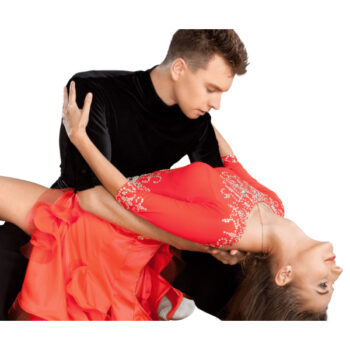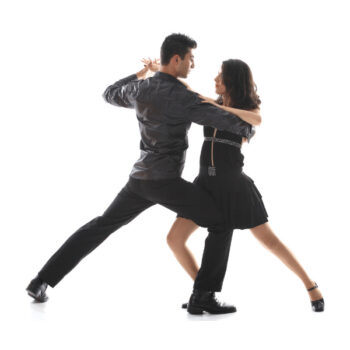Salsa dance style
Salsa dance is a vibrant and energetic partner dance form that originated in the Caribbean region. It has gained immense popularity worldwide for its lively music, intricate footwork, and passionate movements. Salsa is not just a dance; it is a cultural phenomenon that embodies the spirit and rhythm of Latin America.
What are the characteristics of salsa dancing?
Salsa dancing is renowned for its distinctive characteristics that set it apart from other dance styles. The following are key features that define the essence of salsa:
- Quick Footwork: Salsa dances involve fast and precise footwork, with dancers rapidly moving their feet to match the energetic tempo of the music.
- Hip Movements: Salsa is known for its sensual and expressive hip movements. Dancers incorporate hip sways, isolations, and rotations to add fluidity and flair to their movements.
- Intricate Partner Work: Salsa is primarily a partner dance, and the connection between the dancers is vital. Salsa partners engage in intricate patterns of lead and follow, communicating through subtle cues and signals.
- Spins, Turns, and Improvisation: Salsa dancers showcase their skills through impressive spins, turns, and intricate footwork variations. These elements add excitement and visual appeal to the dance, as dancers navigate the floor with speed and precision.
- Syncopated Rhythm: Salsa music features a syncopated rhythm, characterized by accentuated beats that fall in between the main beats. This syncopation creates a lively and infectious groove that drives the dance.
Salsa dancing is a dynamic and visually captivating dance style that demands skill, coordination, and musicality. It combines technical proficiency with a sense of freedom and expression, allowing dancers to showcase their personality and passion on the dance floor.
How is salsa different from other styles?
Salsa dance stands out from other dance styles due to its unique blend of influences. It incorporates elements from various dance forms, including Afro-Cuban dances like Son, Mambo, and Cha-Cha-Cha, as well as other Latin American styles such as Rumba and Pachanga. The fusion of these different dance traditions gives salsa its distinct flavor and character.
Is salsa a sensual dance?
Salsa dance is often associated with sensuality and passion. The close connection between partners, the rhythmic hip movements, and the intense chemistry on the dance floor contribute to its sensual reputation. However, it is important to note that salsa can also be a joyful and exuberant dance, focusing on the celebration of life and music.
Types of salsa dance styles
Salsa dance has evolved, giving rise to various salsa dance styles names that reflect different regional and cultural influences. Each different type of salsa dances has its unique characteristics and flavor, offering dancers a diverse range of options to explore and express themselves.
Salsa dance styles list
Let's look at the most common types of salsa dance styles:
- Cuban Style Salsa (Casino): Originating in Cuba, this style emphasizes circular movements, intricate footwork, and strong partner interaction.
- New York Style Salsa: Developed in the United States, this style is characterized by its flashy and fast-paced footwork, with dancers often breaking on the second beat.
- Los Angeles Style Salsa: Also known as "LA Style Salsa," this style incorporates elements of Latin Ballroom and emphasizes linear movements, elegant styling, and flashy lifts and dips.
- Colombian Style Salsa: Hailing from Colombia, this style showcases intricate footwork and incorporates elements of Cumbia, Vallenato, and other traditional Colombian dances.
- Puerto Rican Style Salsa: This style, popularized in Puerto Rico, features smooth and fluid movements, intricate turns, and playful footwork patterns.
How to dance salsa style?
To dance salsa style, start by finding a partner who shares your enthusiasm for the dance. Stand facing each other with a comfortable distance between you, maintaining a strong frame and connection throughout the ballroom dance.
Begin by stepping on the beat of the music, starting with your left foot for the leader and your right foot for the follower. Keep your steps small and light, allowing for quick changes of direction. As you become more comfortable, add in the signature hip movements that give Miami style salsa its distinct flavor.
Focus on maintaining a clear lead and follow communication with your partner through gentle hand signals and body language. Salsa is all about connection and synchronization between partners, so be attentive and responsive to each other's movements. Remember to have fun, let loose, and let the music guide your body as you embark on an exhilarating salsa dance experience.
Popular salsa dance styles
Popular salsa dance styles vary in popularity across different regions and cultures. The most popular salsa dance style can depend on factors such as cultural preferences, dance communities, and geographic locations.
In the United States, two salsa styles have gained significant followings: New York Style Salsa and Los Angeles Style Salsa. New York Style Salsa, also known as Mambo, is characterized by its fast-paced footwork, elegant styling, and intricate partner work. It is often danced on the second beat of the music, known as the "on-two" timing. Los Angeles Style Salsa, on the other hand, incorporates elements of Latin Ballroom and emphasizes linear movements, intricate turn patterns, and flashy lifts and dips.
In Cuba, the birthplace of salsa, Cuban Salsa (Casino) remains highly popular. This style is deeply rooted in Cuban culture and emphasizes circular movements, intricate footwork, and strong partner interaction. Casino-style salsa often involves spontaneous improvisation and showcases the joyful and vibrant spirit of Cuban music and dance.
What is the most popular salsa dance style?
However, it is important to note that salsa's popularity extends beyond specific styles or regions. Salsa has a global appeal that transcends boundaries and is embraced by dancers and enthusiasts worldwide. Salsa festivals, congresses, and social dance events can be found in numerous countries, providing opportunities for dancers to showcase their skills and connect with others who share a passion for salsa.
Ultimately, the most popular salsa dance style can vary based on the local dance scene, cultural influences, and individual preferences. The beauty of salsa lies in its versatility and ability to adapt to different styles and interpretations while maintaining its infectious rhythm and spirit. So, whether you find yourself dancing New York Style, Los Angeles Style, Cuban Salsa, or any other variation, embrace the joy and passion that salsa brings to the dance floor.
History salsa dance
Salsa dance has a fascinating history that reflects the fusion of diverse cultures in the Caribbean region. Its origins can be traced back to the late 19th century in Cuba, where the convergence of African, European, and Indigenous influences gave birth to this captivating dance style.
The African influence on salsa dance is profound, particularly in its rhythmic and percussive elements. During the era of the Atlantic slave trade, African slaves brought their rich dance traditions to the Caribbean. These dances, characterized by syncopated beats, intricate footwork, and expressive hip movements, greatly influenced the development of salsa.
European influences also played a significant role in shaping salsa dance. The popular French contradance and Spanish flamenco styles were introduced to the Caribbean through European immigrants. These dance forms merged with the existing African and indigenous dances, resulting in a unique fusion of movement and rhythm that became the foundation of salsa.
Salsa dance origin
Salsa dance gained further momentum and popularity in the mid-20th century with the rise of Latin music genres such as Mambo and Cha-Cha-Cha. These musical styles provided the perfect backdrop for the development of salsa dance steps and partner work. The syncopated rhythms and infectious melodies of Mambo and Cha-Cha-Cha inspired dancers to create intricate footwork patterns, sensual salsa dance moves, and dynamic partner interactions, further enriching the salsa dance style.
Over time, salsa spread beyond Cuba and became embraced by Latin American communities around the world. It found its way to the United States, particularly New York and Los Angeles, where it flourished and evolved. Salsa dance became an integral part of Latin American culture and identity, as well as a global phenomenon that continues to captivate dancers and audiences worldwide.
The history of salsa dance is a testament to the power of cultural exchange and the ability of dance to transcend boundaries. It embodies the spirit of resilience, creativity, and joy that can be found in the fusion of diverse cultures. Today, salsa remains a vibrant and evolving dance form, celebrated for its energy, sensuality, and ability to bring people together on the dance floor.
Conclusion
Salsa dance is a captivating and dynamic partner dance that embodies the spirit and rhythm of Latin America. Its energetic footwork, rhythmic hip movements, and passionate expression have captivated dancers and audiences around the world. With its diverse range of styles and influences, salsa offers a vibrant cultural experience.
Whether you're dancing Cuban Salsa, New York Style, Los Angeles Style, Colombian Style, or Puerto Rican Style, salsa allows individuals to express themselves, connect with others, and immerse themselves in the infectious rhythms of Latin music. Salsa dance continues to evolve, adapt, and inspire new generations, ensuring that its legacy will endure for years to come. So put on your dancing shoes, feel the music, and let the joy of salsa dance take you on a rhythmic journey of passion and expression.




